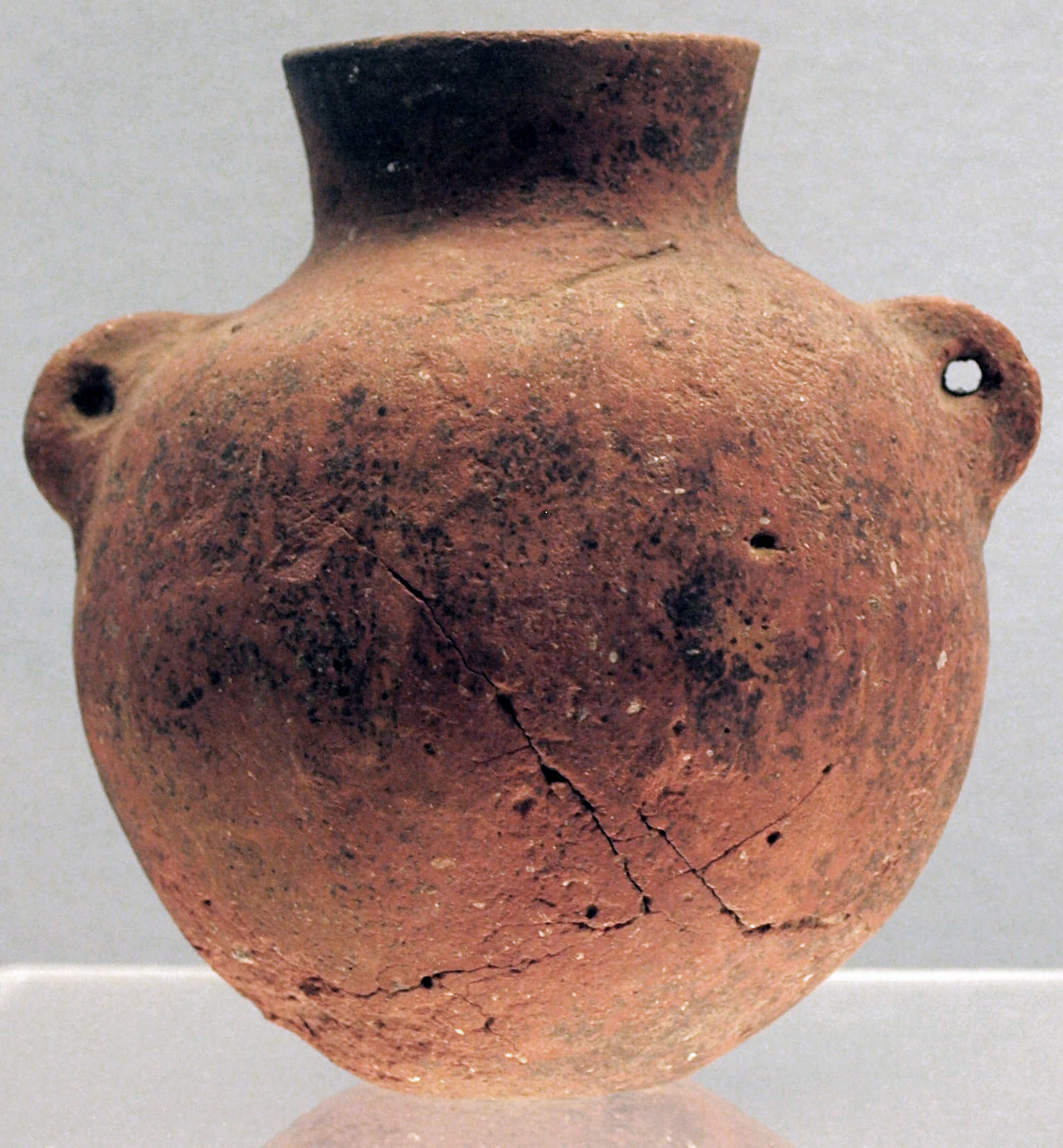Peiligang Culture on:
[Wikipedia]
[Google]
[Amazon]
 The Peiligang culture was a
The Peiligang culture was a
File:PeiligangStoneRollerAndQuern.JPG, Stone roller and quern from the Peiligang site
Ding, Peiligang Xinzheng.Henan provincial museum.jpg, Ding, Peiligang. Henan provincial museum
Neolithic pottery jar, Peiligang Culture, Xinzheng, Henan, 1978.JPG, Neolithic pottery jar, Peiligang Culture, Xinzheng, Henan
Neolithic stone sickle, Peiligang Culture, Jiaxian, Henan, 1976.JPG, Neolithic stone sickle, Peiligang Culture, Jiaxian, Henan
Peiligang Culture bone arrowheads & teeth scrapers.JPG, Peiligang Culture bone arrowheads & teeth scrapers
Red Pottery Jar with a Deep Belley.jpg, Red Pottery Jar with a Deep Belley, Peiligang culture
 The Peiligang culture was a
The Peiligang culture was a Neolithic
The Neolithic period, or New Stone Age, is an Old World archaeological period and the final division of the Stone Age. It saw the Neolithic Revolution, a wide-ranging set of developments that appear to have arisen independently in several parts ...
culture in the Yi-Luo river basin (in modern Henan Province
Henan (; or ; ; alternatively Honan) is a landlocked province of China, in the central part of the country. Henan is often referred to as Zhongyuan or Zhongzhou (), which literally means "central plain" or "midland", although the name is al ...
, China) that existed from 7000 to 5000 BC. Over 100 sites have been identified with the Peiligang culture, nearly all of them in a fairly compact area of about 100 square kilometers in the area just south of the river and along its banks.
Peiligang culture
The culture is named after the site discovered in 1977 at Peiligang, a village in Xinzheng County. Archaeologists believe that the Peiligang culture wasegalitarian
Egalitarianism (), or equalitarianism, is a school of thought within political philosophy that builds from the concept of social equality, prioritizing it for all people. Egalitarian doctrines are generally characterized by the idea that all hum ...
, with little political organization.
The culture practiced agriculture in the form of cultivating millet
Millets () are a highly varied group of small-seeded grasses, widely grown around the world as cereal crops or grains for fodder and human food. Most species generally referred to as millets belong to the tribe Paniceae, but some millets al ...
and animal husbandry in the form of raising pig
The pig (''Sus domesticus''), often called swine, hog, or domestic pig when distinguishing from other members of the genus '' Sus'', is an omnivorous, domesticated, even-toed, hoofed mammal. It is variously considered a subspecies of ''Sus ...
s and possibly poultry. The people hunted deer
Deer or true deer are hoofed ruminant mammals forming the family Cervidae. The two main groups of deer are the Cervinae, including the muntjac, the elk (wapiti), the red deer, and the fallow deer; and the Capreolinae, including the reindeer ...
and wild boar, and fished for carp
Carp are various species of oily freshwater fish from the family Cyprinidae, a very large group of fish native to Europe and Asia. While carp is consumed in many parts of the world, they are generally considered an invasive species in parts of ...
in the nearby river, using nets made from hemp
Hemp, or industrial hemp, is a botanical class of ''Cannabis sativa'' cultivars grown specifically for industrial or medicinal use. It can be used to make a wide range of products. Along with bamboo, hemp is among the fastest growing plants o ...
fibers. The culture is also one of the oldest in ancient China to make pottery
Pottery is the process and the products of forming vessels and other objects with clay and other ceramic materials, which are fired at high temperatures to give them a hard and durable form. Major types include earthenware, stoneware and por ...
. This culture typically had separate residential and burial areas, or cemeteries, like most Neolithic cultures. Common artifacts include stone arrowheads, spearheads and axe heads; stone tools such as chisels, awls and sickles for harvesting grain; and a broad assortment of pottery items for such purposes as cooking and storing grain.
Jiahu
The site at Jiahu is the earliest site associated with Peiligang culture. There are many similarities between the main group of Peiligang settlements and the Jiahu culture, which was isolated several days' travel to the south of the main group. Archaeologists are divided about the relationship between Jiahu and the main group. Most agree that Jiahu was part of the Peiligang culture, pointing to the many similarities. A few archaeologists are pointing to the differences, as well as the distance, believing that Jiahu was a neighbor that shared many cultural characteristics with Peiligang, but was a separate culture. The cultivation ofrice
Rice is the seed of the grass species ''Oryza sativa'' (Asian rice) or less commonly ''Oryza glaberrima
''Oryza glaberrima'', commonly known as African rice, is one of the two domesticated rice species. It was first domesticated and grown i ...
, for example, was unique to Jiahu and was not practiced among the villages of the main Peiligang group in the north. Also, Jiahu existed for several hundred years before any of the settlements of the main group.
Gallery
See also
* Jiahu symbols *Prehistoric Beifudi site
Beifudi () is an archaeological site and Neolithic village in Yi County, Hebei, China. The site, an area of 3 ha on the northern bank of the Yishui River, contains artifacts of a culture contemporaneous with the Cishan and Xinglongwa cultu ...
References
Bibliography
* * {{Neolithic cultures of China Neolithic cultures of China History of Henan 7th-millennium BC establishments